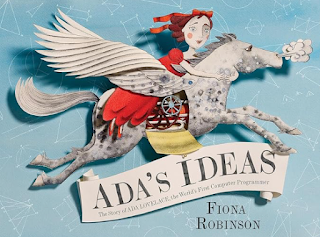What do you know about seaweed? Anita Sanchez has written a new book that describes how seaweed can even help mitigate climate change. Intrigued? You should be!
I’ve known Anita since I was an intern at the Five Rivers Environmental Education Center and she was my supervisor. Since then we’ve been swapping manuscripts. I was fortunate to see early pages of The Forests In The Sea. It was such a treat to see the finished book this week at the library, complete with some terrific photos.
Welcome, Anita! Tell us about the inspiration for this latest middle grade book, THE FOREST IN THE SEA, a Junior Library Guild Gold Standard Selection.
As I was researching a book on climate change, I was getting a bit depressed by some of the scary climate change info. But when I began to focus on solutions, I was intrigued to realize how many of them involved seaweed. Seaweed is usually thought of as this slimy stuff that just lies there on a beach, but it’s one of the oldest life forms on the planet. It can capture carbon, create oxygen, and change the chemistry of water. It’s an incredibly efficient filter to remove pollution from our oceans. And, of course, you can eat it!
I was fascinated to learn about seaweed-eating cows in the UK. How did you uncover these stories? Tell us about the research process.
Sometimes it’s just luck. I was researching seaweed as an important basis of the food chain for countless marine animals, and I happened to google “what animals eat seaweed?” I was thinking of fish or seabirds, but I was surprised to see cows pop up. There were many websites with information on seaweed-eating cows, sheep, and pigs.
At first I thought it would just be a funny sidebar—apparently there’s a population of sheep in Scotland where the sheep have learned to swim to their favorite seaweed snack spots. But it turns out that by adding certain types of seaweed to livestock feed, you can lower methane emissions by 90 percent. There are more than a billion of cows on our planet, and it’s a not-so-funny fact that cow burps give off a huge amount of methane, a powerful greenhouse gas.
Did you face any challenges along the way?
It’s always a challenge to write about plants (well, algae, really) instead of animals. Kids usually love cute furry animals, but cold slimy seaweed is a harder sell. I tried to add action and adventure to the book by writing about a time I went snorkeling among waving fronds of rockweed in the North Atlantic (cold!) Also writing about seaweed farmers and Native Americans using seaweed to filter wetlands gave the book a human touch.
Students have often encountered seaweed on beaches all over our coastlines. Please tell teachers how they can use this book in the classroom.
Students reading the book will discover there’s a wide range of animals that use seaweed for habitat—food and/or shelter. Drawing a food web of all the organisms that depend on seaweed will show that seaweed (including phytoplankton, bits of green that float around the open sea) is the basis of all marine food chains.
Also, the book can be used to spark a discussion of climate change—not to focus on the doom and gloom aspects, but to focus instead on solutions. Each chapter reveals a way seaweed can help with our planet’s problems. One of my favorites is the group of Shinnecock women who started a seaweed farm to clean polluted water in Long Island sound where their ancestors lived.
Thanks for chatting with me, Anita. As I know, this is just one of your recent STEM titles. Please share your other title and tell us what is next for you. Can you give us a hint?
I’ve recently been lucky enough to have several books released. One is Hello, Puddle!, a picture book look at a little-noticed habitat for wildlife—mud puddles. Another is The Monkey Trial, which is about the teacher who was arrested and put on trial for teaching evolution on a Tennessee classroom in 1925. In this era of banned books and censored curricula, it’s sadly all too timely.
Currently I’m working on Scat: The Incredible Science of Wildlife Poop. Like Forest in the Sea, it focuses on a weird, somewhat icky part of nature that turns out to have amazing solutions for climate change and other environmental problems. Scat can give scientists a wealth of information about endangered species of wildlife, disperse seeds, fertilize plankton, regenerate soil after wildfires, and much more. My favorite story is about a team of Mexican scientists who reseeded a burned-out forest by luring fruit bats to poop out a “seed rain” of tree seeds.
And I’ve enjoyed working with photographers around the world to seek out images of wildlife—my favorite is of a slightly embarrassed warthog caught in the act of pooping.
More about Anita:
Anita Sanchez’s award-winning books sing the praises of unloved plants and animals, and of the unusual, often ignored wild places of the world: dandelions, poison ivy, seaweed, mud puddles, glaciers. Years of field work and teaching outdoor classes have given her firsthand experience introducing students to the wonders of nature. Her many science books for young readers include The Forest in the Sea: Seaweed Solutions to Planetary Problems (Junior Library Guild Gold Standard Selection) from Holiday House. Recently released: The Monkey Trial: John Scopes and the Battle over Teaching Evolution from Clarion Books.
























































